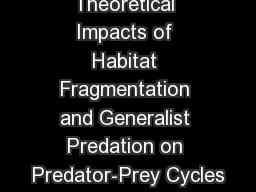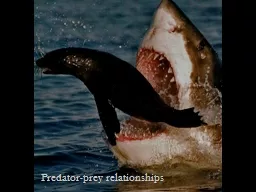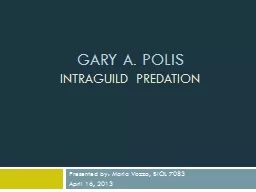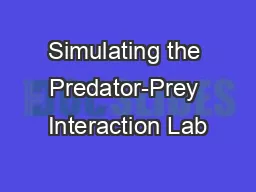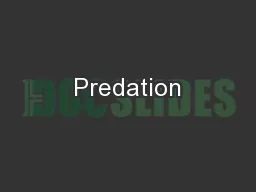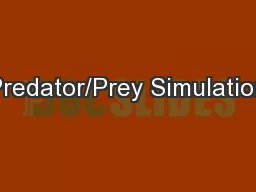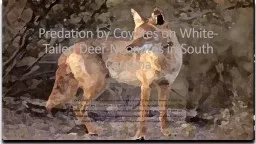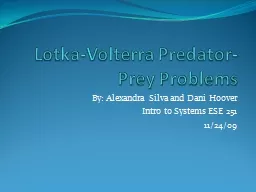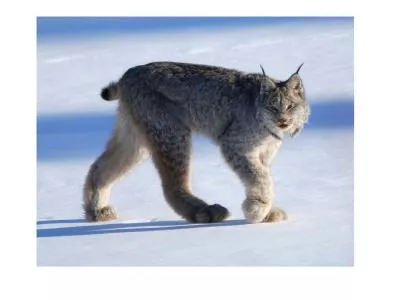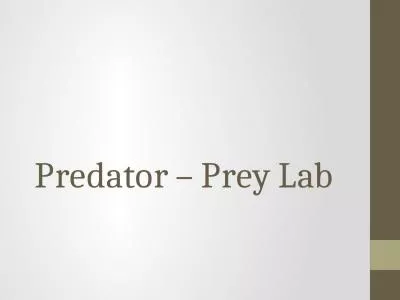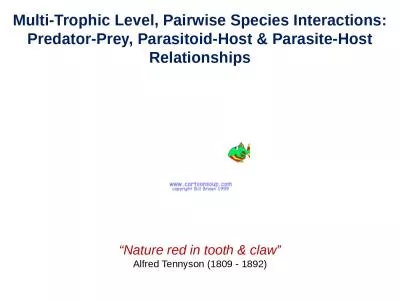PPT-Theoretical Impacts of Habitat Fragmentation and Generalist Predation on Predator-Prey
Author : min-jolicoeur | Published Date : 2018-02-18
Kelsey Vitense Current Challenges for Mathematical Modelling of Cyclic Populations Workshop at BIRS 111213 Outline Motivation Models Results Next steps Meadow
Presentation Embed Code
Download Presentation
Download Presentation The PPT/PDF document "Theoretical Impacts of Habitat Fragmenta..." is the property of its rightful owner. Permission is granted to download and print the materials on this website for personal, non-commercial use only, and to display it on your personal computer provided you do not modify the materials and that you retain all copyright notices contained in the materials. By downloading content from our website, you accept the terms of this agreement.
Theoretical Impacts of Habitat Fragmentation and Generalist Predation on Predator-Prey: Transcript
Download Rules Of Document
"Theoretical Impacts of Habitat Fragmentation and Generalist Predation on Predator-Prey"The content belongs to its owner. You may download and print it for personal use, without modification, and keep all copyright notices. By downloading, you agree to these terms.
Related Documents

